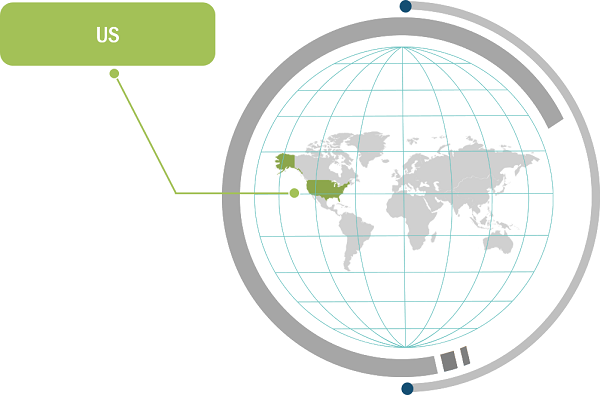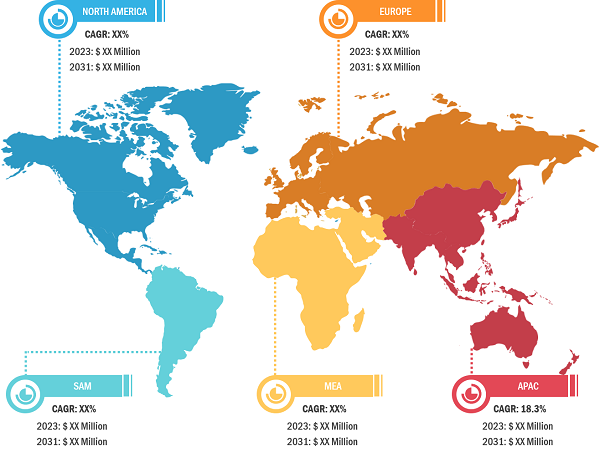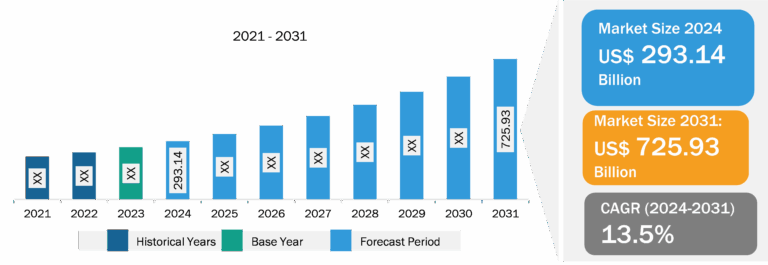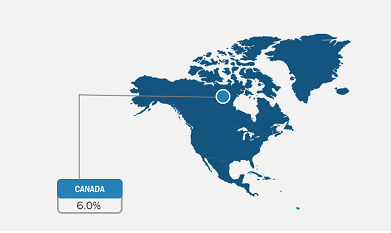
Deepfake AI Detection Market
Increased Use of AI in Media and Entertainment to Fuel Deepfake AI Detection Market Growth During Forecast Period
Artificial intelligence plays a key role in increasing user engagement on over-the-top (OTT) platforms by providing advertisers with real-time insights into campaign performance. As AI continues to improve, it is expected to provide increasingly personalized experiences to audiences while collecting valuable behavioral data. AI has become a formidable force in game development, film production, and advertising, generating innovative processes across industries. AI has become a catalyst in the media and entertainment sector, triggering strategic investments and anchoring a determined pursuit of meeting ever-growing audience demands. As per the eftsure statistics on deepfake incidents, in 2023, 60% of American people raised concerns related to deepfake, which is more than other AI tasks.
Deepfake poses dual risks and benefits, complicating societal trust in media authenticity. While malicious uses, such as the creation of misleading audiovisual media, threaten public trust, they also have innovative applications in areas such as filmmaking and language translation. As per the Forbes Advisor survey, 35% of companies are implementing artificial intelligence (AI) in content production, 24% in audience segmentation.

This proliferation of AI-generated media has raised significant concerns about the authenticity of digital content and the potential for misinformation. As a result, there is a growing demand for reliable deepfake detection software. Media companies, social platforms, and content creators are seeking robust tools to verify the authenticity of videos, images, and audio files, which is driving rapid growth in the deepfake AI detection market.
Deepfake AI Detection Market: Industry Overview
The deepfake AI detection market is segmented into component, deployment, enterprise size, and vertical. By component, the market is classified into software and services. By deployment, the market is segmented into cloud and on-premises. Based on enterprise size, the deepfake AI detection market is classified into small and medium enterprises (SMEs) and large enterprises. Based on vertical, the deepfake AI detection market is classified into media and entertainment, BFSI, government and politics, healthcare and life sciences, IT and telecom, retail and e-commerce, and others. By geography, the deepfake AI detection market is segmented into North America, Asia Pacific, Europe, the Middle East & Africa, and South & Central America.
In terms of revenue, North America dominated the deepfake AI detection market share, followed by Europe and APAC. The deepfake AI detection market in North America is subsegmented into the US, Canada, and Mexico. The US is anticipated to hold the largest deepfake AI detection market share by 2031. The increasing rate of digitalization across various sectors, the growing adoption of digital technologies, and high technology spending by government agencies are the key factors expected to boost the adoption of the deepfake AI detection market in the US during the forecast period. In the US, industries are focusing on promoting their products to customers in the country through deepfake content for advertising and other purposes, which can be misused by bad actors. The rise in utilization of deepfake AI technology in education, film industry, advertising, e-commerce, retail, and other industries is anticipated to boost the deepfake AI detection market growth in the US in the coming years. The rise in government initiatives toward the drafting of new laws and rules against deepfake content and ensuring democracy’s security is anticipated to boost the deepfake AI detection market growth in the US in the coming years. Moreover, the rise in the development of deepfake detection and authentication techniques or tools to ensure transparency among the public is further fueling the growth of the market during the forecast period. The US registered an increase in identity fraud rate from 1.04% in 2021 to 1.68% in 2023. In addition, the growth of deepfake attacks in the US increased by 477% from 2022 to 2023. Such a rise in deepfake AI attacks by bad actors or scammers in the US is anticipated to fuel the deepfake AI detection market growth from 2023 to 2031.
Deepfake AI Detection Market: Competitive Landscape and Key Developments
Sightengine, Clarity, FaceOnLive, Buster.Ai, SpoofSense, Facia.ai, Kroop AI, Reality Defender Inc., Au10tix, Microsoft, BioID, Sensity B.V., ValidSoft, Sentinel, HyperVerge Inc., DuckDuckGoose, McAfee Corp, deepfakedetector.ai, Attestiv Inc., and Intel Corporation are among the leading players profiled in the deepfake AI detection market report. Several other essential market players were analyzed for a holistic view of the market and its ecosystem. The deepfake AI detection market report provides detailed market insights, which help the key players strategize their market growth. As per the company press releases, below are a few recent key developments:
- Microsoft and OpenAI announced a US$ 2 million funding to combat the growing risks of AI and deepfakes being used to deceive voters and undermine democracy.
(Source: Microsoft, Press Release, May 2024)
- BioID, a leading provider of biometric authentication solutions, announced the release of its updated deepfake detection technology 2.0. This solution harnesses the power of artificial intelligence (AI) to counter the most recent cybersecurity menace posed by manipulated images and videos, e.g., deepfake media across online platforms.
(Source: BioID, Press Release, March 2024)





